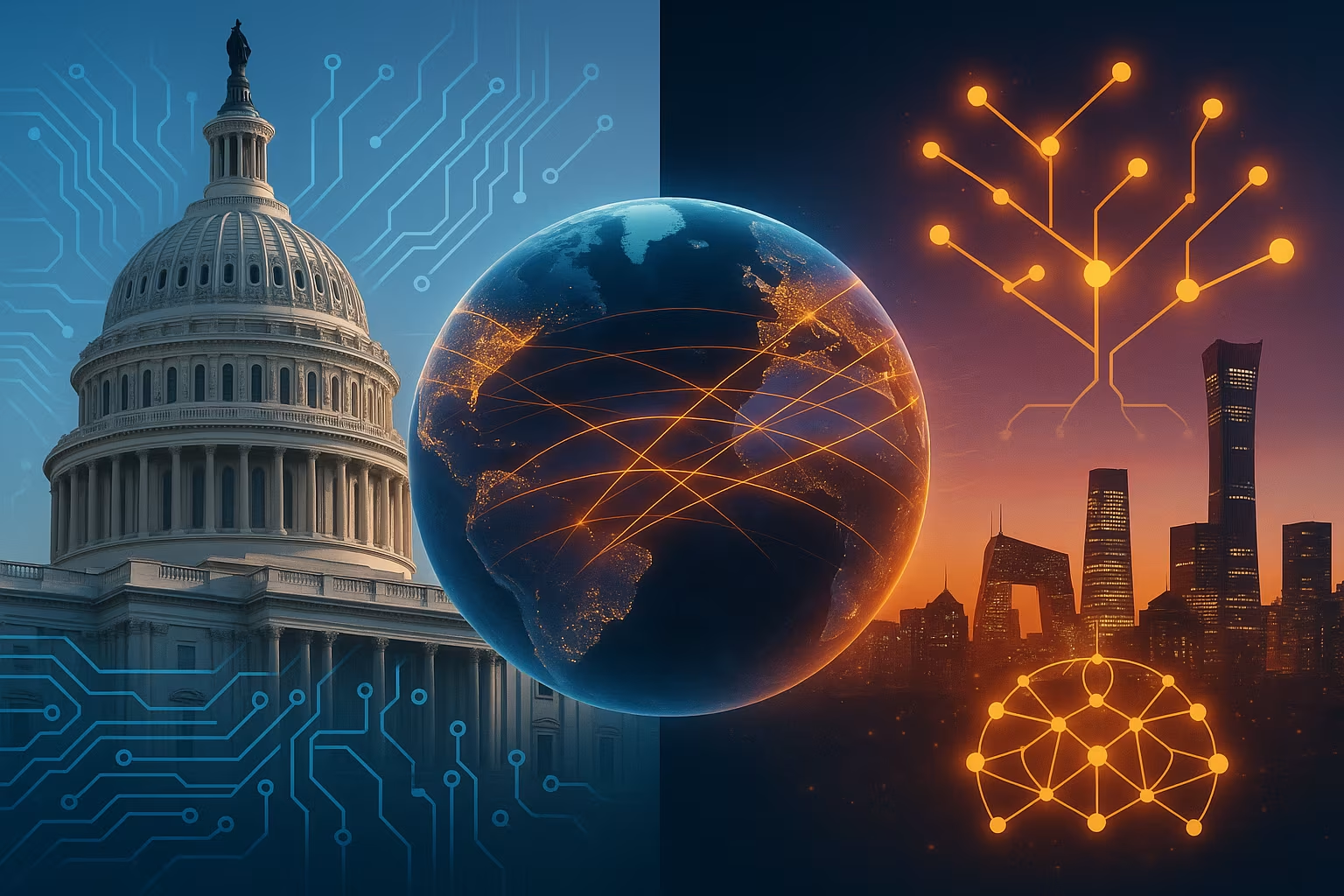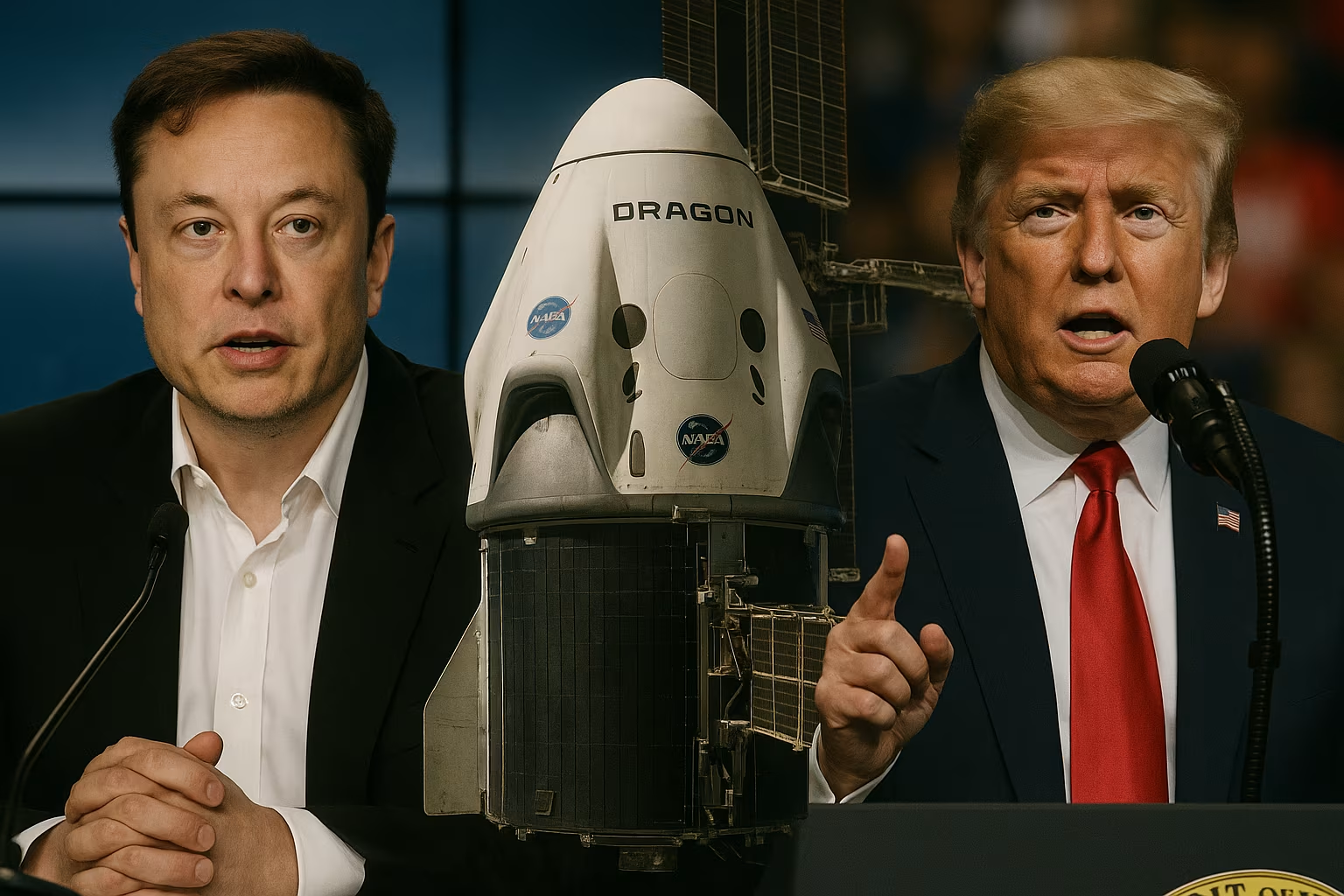Artificial intelligence has become the defining technology of the 21st century, promising to reshape economies, alter global power balances, and redefine how societies operate. At the center of this race are two superpowers—the United States and China—each determined to secure leadership in AI. While both nations have invested heavily in research, talent, and infrastructure, their approaches, strengths, and challenges differ in ways that will determine who leads the next wave of technological transformation.
Research and Innovation Ecosystems
The United States has long dominated the global AI research landscape, driven by world-class universities like MIT, Stanford, and Carnegie Mellon, along with tech giants such as Google, Microsoft, OpenAI, and Meta. Many of the foundational breakthroughs in machine learning, neural networks, and natural language processing have originated in U.S. labs. The presence of a vast venture capital ecosystem also ensures that ideas move quickly from research to commercialization.
China, however, has been closing the gap. Over the past decade, Chinese institutions have dramatically increased their AI research output, often surpassing the U.S. in the sheer number of academic papers published. Tech powerhouses like Baidu, Tencent, Alibaba, and Huawei invest heavily in applied AI, while state-backed funding ensures that promising initiatives do not stall due to financial constraints. While critics note that quantity does not always equal quality, the rapid improvement of Chinese research output is undeniable.
Government Policy and Strategy
In Washington, AI policy has historically been fragmented, with innovation largely left to the private sector. Recent years, however, have seen the U.S. government become more proactive. Initiatives like the National AI Research Resource, expanded semiconductor subsidies, and tighter export controls on advanced chips signal a more deliberate strategy to maintain technological leadership while restricting rivals’ access to critical tools.
Beijing, on the other hand, has woven AI directly into its national development strategy. Its “Next Generation Artificial Intelligence Development Plan” explicitly calls for China to be the global leader in AI by 2030. This top-down approach ensures coordination across ministries, universities, and industries. The result is a tightly integrated ecosystem where research, development, and deployment align with state objectives such as surveillance, smart cities, and industrial modernization.
Talent and Workforce Development
Talent remains a key battleground. The U.S. continues to attract the world’s top AI researchers thanks to its universities and innovation culture. However, restrictive immigration policies and visa limitations have, at times, slowed the inflow of global talent.
China has responded with aggressive programs to cultivate domestic expertise, including state-sponsored scholarships, partnerships with leading universities, and talent recruitment programs designed to bring home Chinese researchers working abroad. The result is a rapidly expanding base of skilled engineers and scientists contributing to the AI boom. Still, the U.S. benefits from an unmatched diversity of talent and access to global collaboration networks.
Hardware and Infrastructure
AI is only as strong as the compute power behind it, and this is where the U.S. currently holds a decisive edge. American companies like Nvidia and AMD dominate the GPU and accelerator markets, supplying the core chips that train and run advanced AI systems. Major cloud providers such as Amazon Web Services, Microsoft Azure, and Google Cloud also provide the world’s largest AI training infrastructure.
China has made strides in building domestic chip capabilities, but U.S. export restrictions have complicated its access to cutting-edge semiconductors. To overcome these hurdles, China is investing billions into indigenous chip development and building massive data centers optimized for AI. While progress is evident, the gap in high-end chip design and fabrication remains one of Beijing’s biggest challenges.
Commercial Applications
American companies lead in consumer-facing AI, from OpenAI’s ChatGPT to Google’s DeepMind advances and Tesla’s autonomous driving innovations. The U.S. excels in areas where venture capital and entrepreneurial risk-taking accelerate the adoption of breakthrough technologies.
China, however, is unmatched in scale of deployment. AI powers China’s e-commerce platforms, logistics networks, mobile payments, and smart cities. Applications like facial recognition, voice assistants, and digital health systems are integrated into daily life at a scale not seen in the U.S. This mass adoption not only drives economic impact but also provides Chinese companies with enormous volumes of user data to refine their algorithms.
Ethical and Regulatory Considerations
The U.S. AI ecosystem operates under strong public scrutiny, with debates about data privacy, algorithmic bias, and responsible use shaping both policy and corporate strategy. While regulation is still evolving, pressure from civil society and international allies ensures that ethical considerations are part of the conversation.
China’s approach is more utilitarian. AI is seen primarily as a tool for economic development and social governance, with fewer institutional checks on its use for surveillance and state control. While this accelerates deployment in areas like public security, it raises concerns about civil liberties and long-term trust in AI governance.
Military and Security Implications
Both the U.S. and China recognize AI as a critical factor in national defense. In the United States, the Department of Defense is investing in AI for battlefield decision-making, logistics, and autonomous systems. DARPA and related agencies fund cutting-edge projects aimed at ensuring the U.S. military maintains a technological edge.
China’s military strategy explicitly integrates AI into its modernization goals. From autonomous drones to predictive intelligence systems, the People’s Liberation Army is betting heavily on AI as a force multiplier. Given the geopolitical rivalry between the two powers, AI’s role in defense technology heightens global tensions and introduces new security dilemmas.
The Road Ahead
The AI showdown between the U.S. and China is not simply about technology—it’s about shaping the rules of the future global economy and security order. The U.S. maintains strong advantages in high-end chips, global talent, and research quality, while China leverages scale, government coordination, and massive deployment capacity.
Who “wins” may ultimately depend on more than raw capability. The decisive factors could include who builds greater public trust, who fosters sustainable ecosystems, and who manages to align innovation with societal benefit. It is also possible that the rivalry will create a bifurcated AI world—one shaped by American values of openness and entrepreneurship, the other by China’s model of state-driven development.
What is certain is that AI is no longer just a technological race; it is a geopolitical contest with stakes stretching from commerce to national security. The U.S. and China are locked in a contest that will shape not only who leads in artificial intelligence but also how the future of technology is defined for decades to come.





